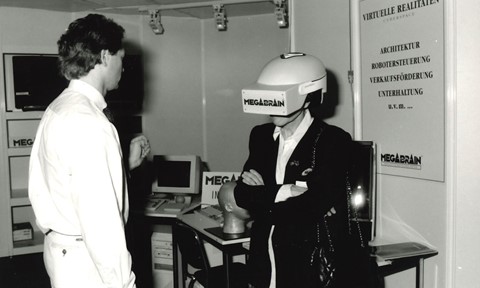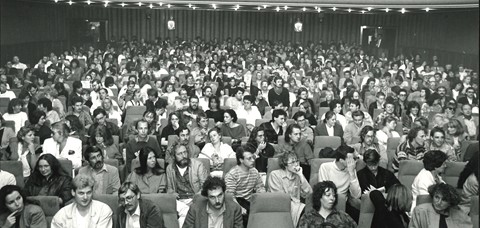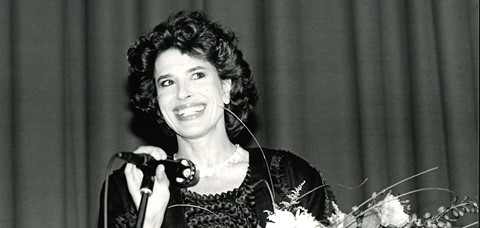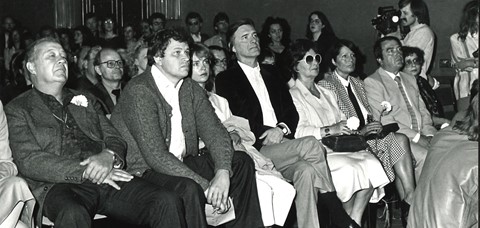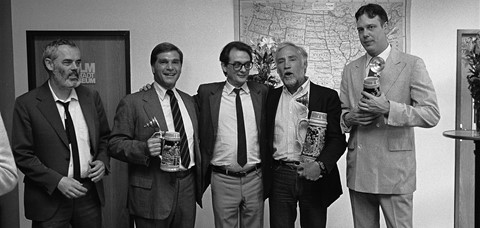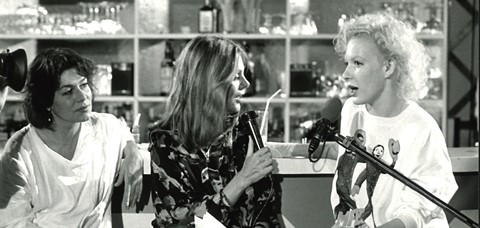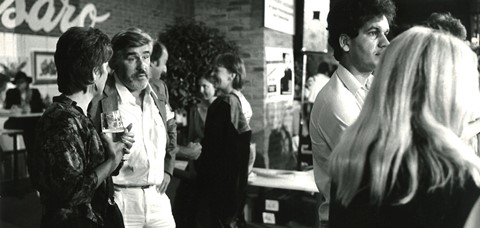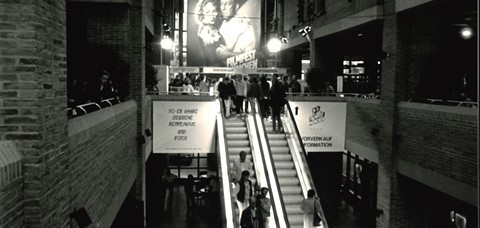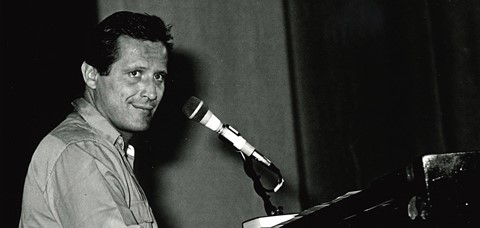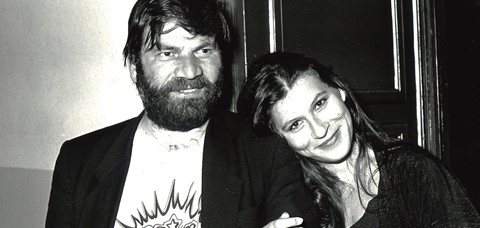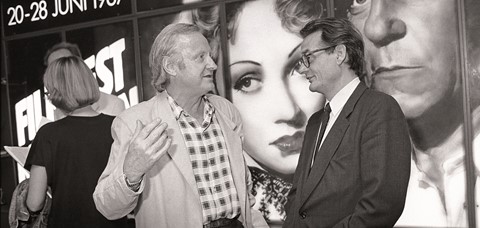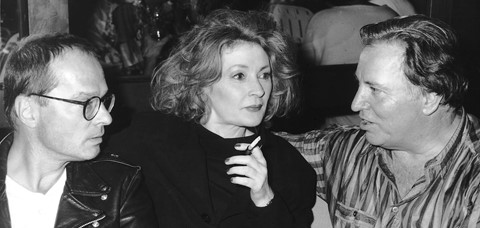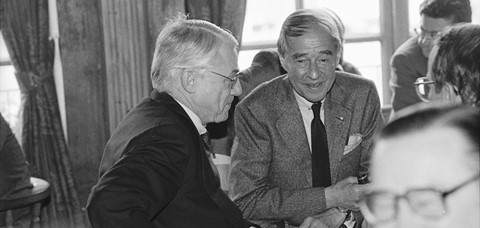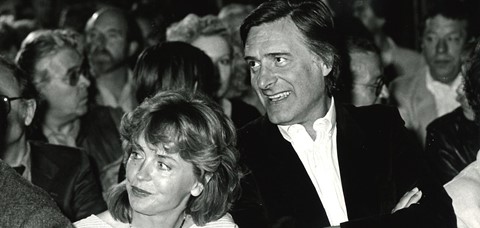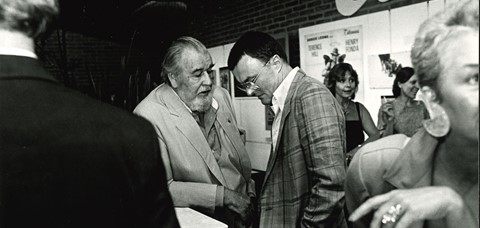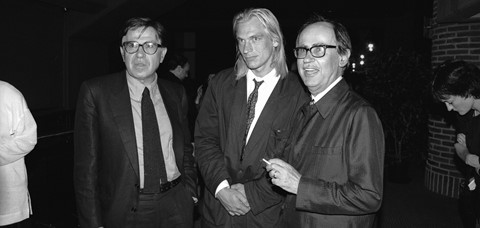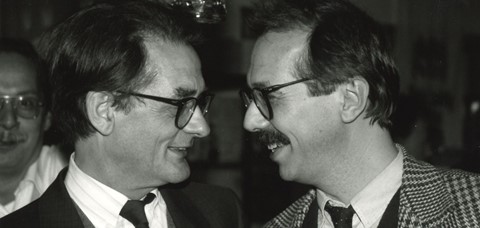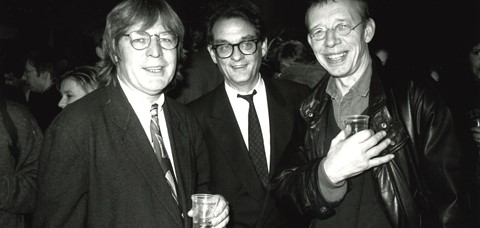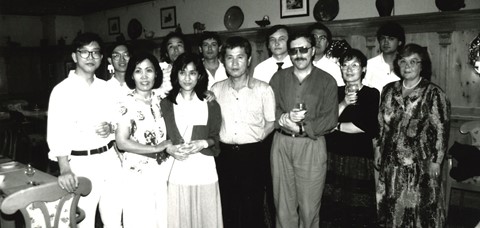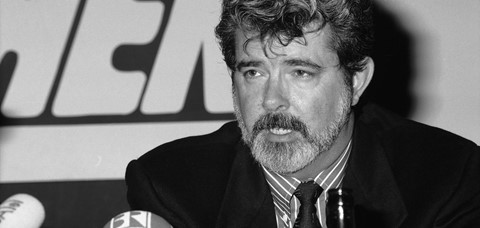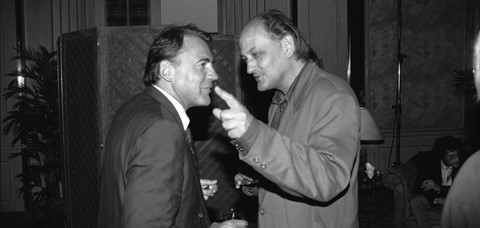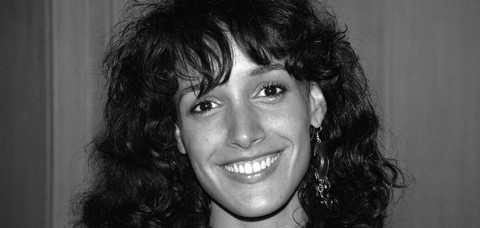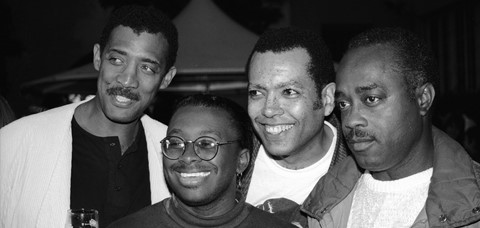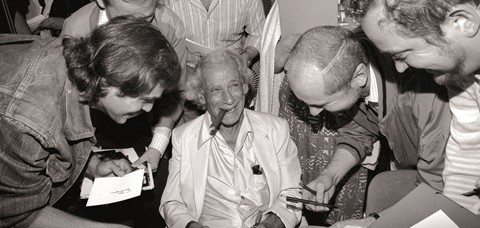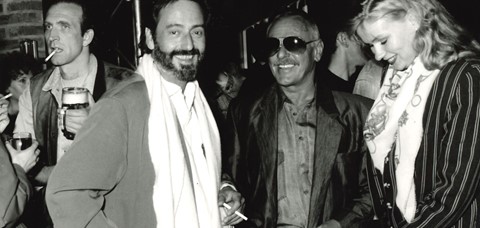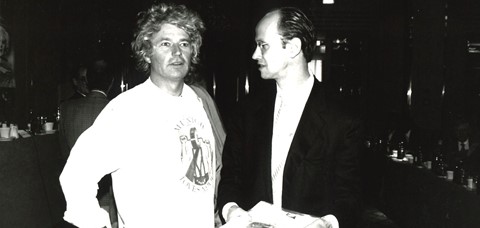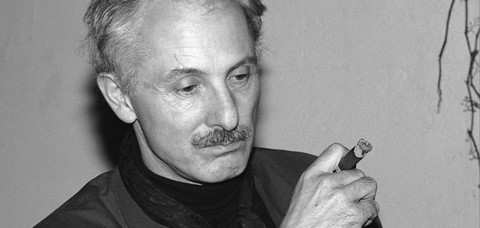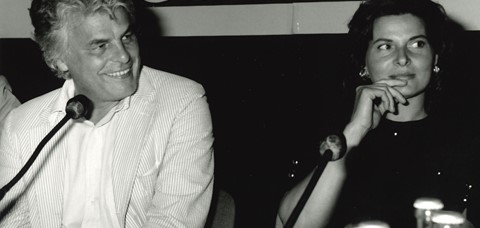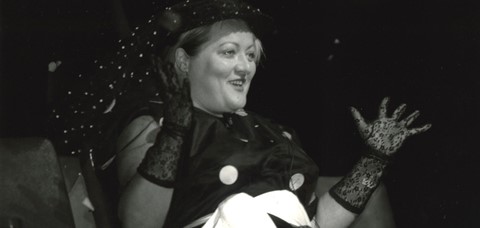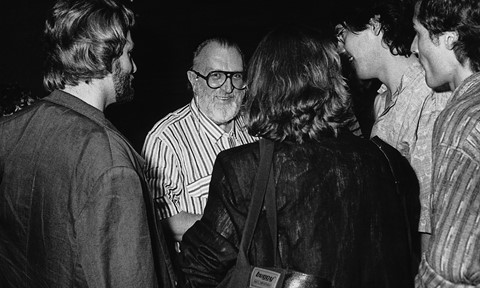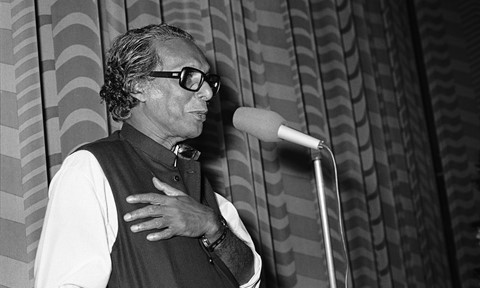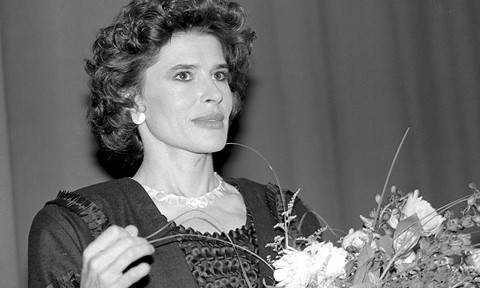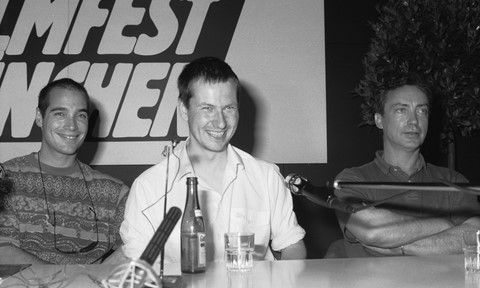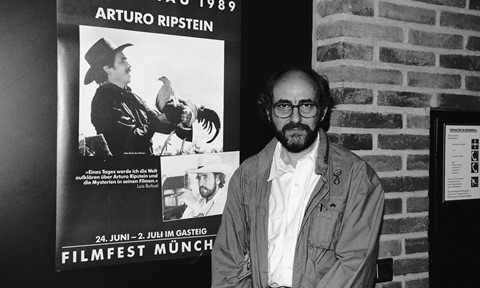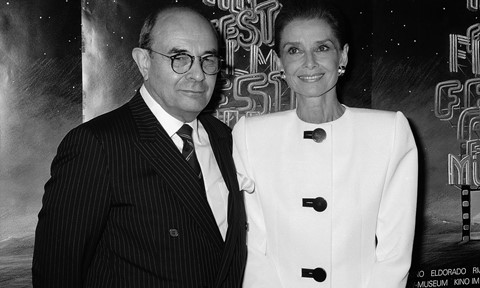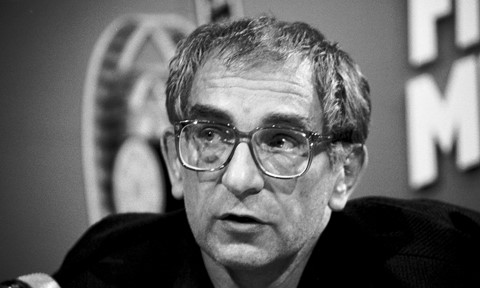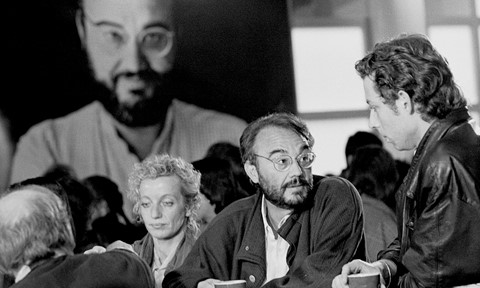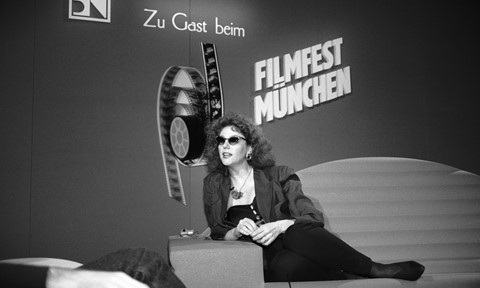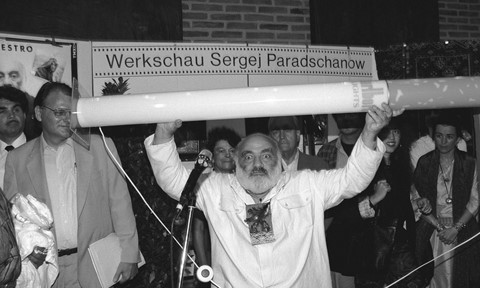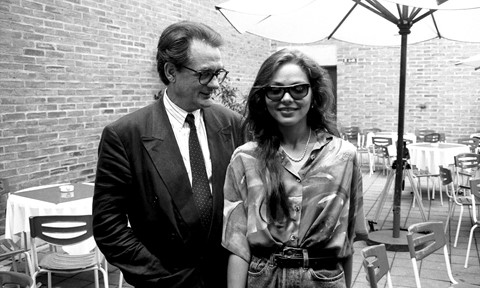1983-92
the first FESTIVAL
The first edition of FILMFEST MÜNCHEN ran for one week, ending on Sunday, June 26, 1983. Its lineup included more than a hundred films from Germany and abroad. The first homage was to German actress Camilla Horn, whose roles included that of Gretchen in Friedrich Murnau’s FAUST (1925). The day after the festival opened, the city honored Horn at the Filmmuseum on Jakobsplatz, with producer-director Franz Seitz introducing her in a laudatory speech. The retrospective was dedicated to Belgian actress, writer, and director Chantal Akerman, then 33 years old, whose JEANNE DIELMAN, 23, QUAI DU COMMERCE, 1080 BRUXELLES (1975) was recently named the best film of all time by the British Film Institute’s monthly magazine Sight & Sound.
The Künstlerhaus on Lenbachplatz was the festival center’s first location. Tickets were sold there and panel discussions were held on such topics as “From Marlene Dietrich to J.R.: Selling Out a Profession?” (with panelists including Gaby Dohm, Uwe Ochsenknecht, Maria Schell, Helmut Dietl, and Vadim Glowna) and “How National Must a Film Be in Order to Be Internationally Successful?" (with Margarethe von Trotta, Werner Herzog, Reinhard Hauff, and Alexander Kluge among the panelists).
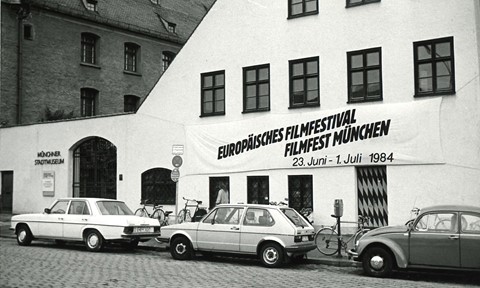
Filmmuseum
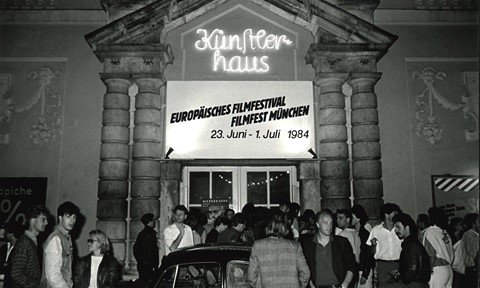
Künstlerhaus
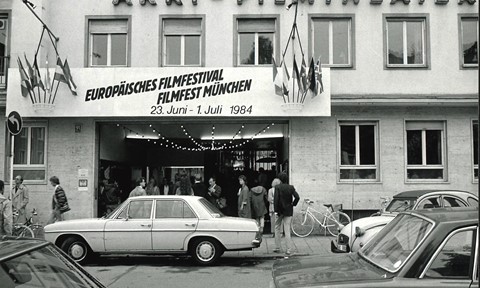
ARRI-Kino
When it came to the festival cinemas, festival director Eberhard Hauff and his team aimed for the city’s movie theaters to be involved in a significant way. “We’ve involved several Munich movie theaters in our project: the Gloria-Palast, the New ARRI Cinema in Schwabing, and the Filmmuseum in the center of town,” Hauff told München Mosaik prior to the start of the festival. “These festival cinemas will offer a mainly European lineup consisting of German premieres. In addition, there will be special sections of films, such as a survey of ’off-Hollywood cinema’, with American director Robert Young presenting classic and contemporary films. Munich’s female directors will present ‘Films We Love’, an interesting showcase of European films for women.”
A panel discussion titled “Reviewing Films Made by Women”, held at the Künstlerhaus, focused on those films, with directors Margarethe von Trotta, Christel Buschmann, and Ula Stöckl, as well as film critic Ponkie from the Abendzeitung, participating in the discussion.
INITIAL SUCCESS AND A NEW EPITHET: “EUROPEAN FILM FESTIVAL”
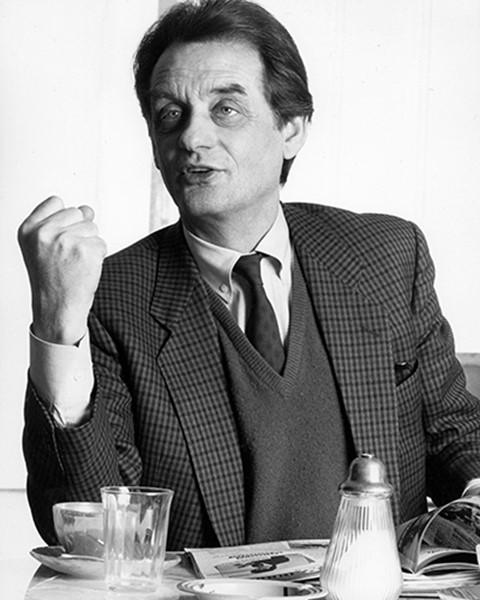
After just two years, one thing is clear: the people of Munich have embraced their film festival. Last year saw more than 45,000 people attending — twice as many as in 1983. Perhaps even more will rediscover the cinema in 1985. The demand for feature films is enormous. But there are too few films, and more and more movie theaters are struggling. Festivals are not a panacea, but they are an event and generate an appetite for cinema.
The success of the first edition made it possible for the Filmfest to establish itself as an annual event in the city. That said, the second edition was already aiming its sights well beyond Munich. “This year we are presenting a broad panorama of European film,” Eberhard Hauff announced in the 1984 catalogue. “Following an initiative by the European Parliament and the Commission of the European Community, we are organizing the first EUROPEAN FILM FESTIVAL in cooperation with the Federation of European Film Directors. This is the start of a project which fills us all with great expectations. Along with the ten member states of the European Community, we have invited all the countries of Western and Eastern Europe.”
As to why the Filmfest merited being a “European Film Festival”, film director Peter Fleischmann, president of the Federation of European Film Directors, explained: “Munich does not have a competition festival; the Künstlerhaus offers an attractive setting for dialogue between audiences and filmmakers; Munich is a major site of European filmmaking.”
The many European films in the program were not the only sign that the Filmfest intended to live up to its new epithet; the festival also chose an Italian director, Lina Wertmüller, for its retrospective in 1984.
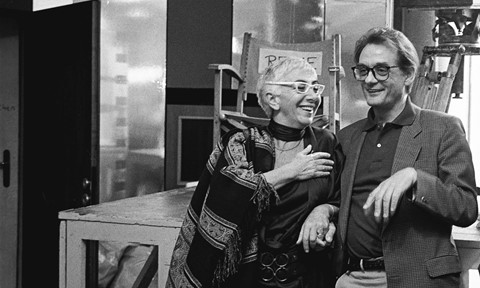
Naturally, the present state and future of international cinema were major points of discussion at the European Film Festival. “Do European Films Still Express European Values?” was the question posed by a 1984 seminar led by Eckart Bruchner, the “pastor of cinema”, who remains active in the Interfilm Akademie even today. Since 1986, the Interfilm Akademie has awarded the One Future Prize to films screened at the festival “which, ethically as well as aesthetically, show that our world has one common future.” In 1988, for example, the One Future Prize was awarded to Polish director Krzysztof Kieślowski for A SHORT FILM ABOUT KILLING.
For the festival’s international lineup, the curators continually looked far beyond Eastern Europe. In a foreword to the catalogue, Eberhard Hauff touted a section presenting “Unknown Soviet Films” as one of the highlights of 1987. In 1989, the Filmfest put together a special section of “Soviet Documentary Films”, and in 1990 there was another called “New Soviet Cinema”. After the Soviet Union was dissolved in December 1991, “Films from the CIS” were screened in 1992.
THE EARLIEST GUESTS OF HONOR
Year after year, the festival honored filmmakers from all over the world for their career accomplishments. Lina Wertmüller in the first year of the festival was followed in 1985 by two retrospectives, one of films by Indian director Mrinal Sen, another of films by US director Paul Schrader. Next up were Spanish director Manuel Gutiérrez Aragón (1987), Georgian director Sergei Parajanov (1988), Mexican director Arturo Ripstein (1989), Korean director Im Kwon-taek (1990), the two Russian filmmakers Andrei Konchalovsky and Nikita Mikhalkov (1991), and one of the founders and foremost directors of the Japanese New Wave, Nagisa Oshima (1992).
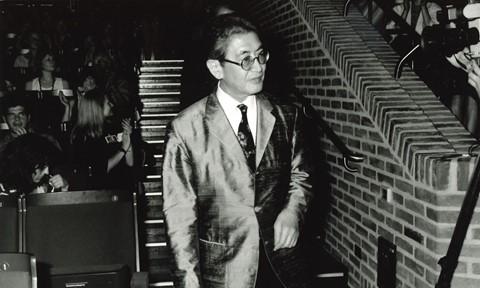
Thank you very much for everything in Munich. I never had such a happy time at any film festival in all my life. The Festival staff gave me a warm welcome, and I hope they remain friends of mine forever.
From the beginning, the Filmfest had homages or tributes to leading figures from the world of film, including Robert Altman (1985), Sergio Leone, Norman Mailer, and Axel Corti (1986), Volker Koepp and Fanny Ardant (1987). Either their latest films or exemplary individual films from their œuvre were screened. Fanny Ardant was starring in Ettore Scola’s latest film, LA FAMIGLIA, which opened Filmfest 1987. Other guests of honor included Italian actresses Stefania Sandrelli (1988) and Ornella Muti (1990), Austrian director Xaver Schwarzenberger (also 1990), Lars von Trier (1991), who was still at the start of his career, and musical legend Stanley Donen, who came to Munich along with Audrey Hepburn in 1992.
the AMERICAN INDIES
The first festival looked at “Off-Hollywood” films — independent productions from the United States — and the second festival continued this. There was again a focus on films “Made in Texas”, which included BLOOD SIMPLE, the feature film debut of the Coen brothers. In 1990, a panel discussion was held on “The Depiction of Texas in American Film”, with native Texans Richard Linklater and Eagle Pennell as panelists. Pennell was in Munich with his latest film, HEART FULL OF SOUL, and Linklater with his Generation X comedy SLACKER, which later achieved cult status.
Again and again, representatives of Black cinema brought their latest films to Munich. In 1987, for example, Robert Townsend screened his comedy HOLLYWOOD SHUFFLE. In 1990, a special section was dedicated to “Young Black Cinema”. African-American film scholar Albert Johnson, a professor at the University of California, Berkeley, was invited to the Filmfest in 1987 and several times after that to give seminars on such topics as the image of Black and Native Americans in US films. In 1992, the festival presented “Surviving Columbus”, an entire section of films by Native Americans, featuring a number of guests from overseas.
“In 1992, the whole world was celebrating Columbus’s discovery of the Americas. By chance, I met some people in the United States who told me that there were a number of recent films by Native Americans which had hardly been shown outside the country. I had the films sent to me and was thrilled. I then screened twenty of them at the Filmfest under the title ‘Surviving Columbus’. Five or six of the filmmakers came to Munich and got a lot of attention. Audiences came from the furthest corners of Bavaria! They were not film aficionados; they’d come to see the ‘Indians’. The mayor held a reception for the directors, and the TV networks wooed them because they had great audience appeal. Later, the Native Americans took the Filmfest catalogue to Robert Redford and told him, ‘See what Munich has done for us, Robert!’ He then organized a reception for them, to which he invited me as well. The whole thing was then repeated at his festival at Sundance.”
(Ulla Rapp)
In 1989, “Meet the Indies” was held at the Filmmuseum for the first time. This Wednesday celebration soon evolved into the legendary “Indie” party. The Filmmuseum's courtyard was filled with local festivalgoers and guests from abroad, including the stars of the US independent film scene, such as Hal Hartley, whose work was shown in a retrospective at the Filmmuseum in 1992.
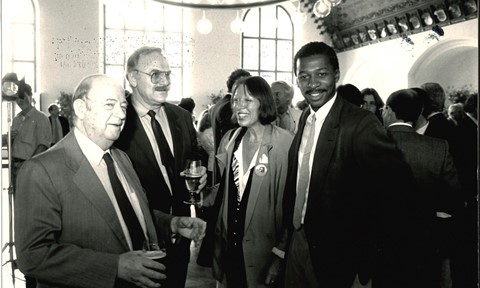
Ulla rapp and Robert Townsend
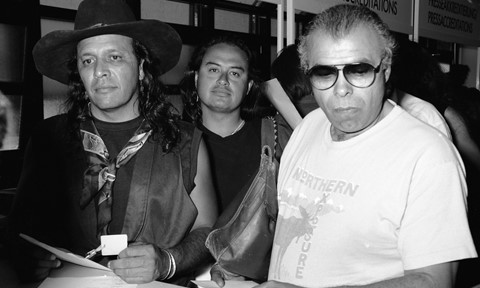
Fileberto Kuru'es, Fidel Moreno and phil lucas
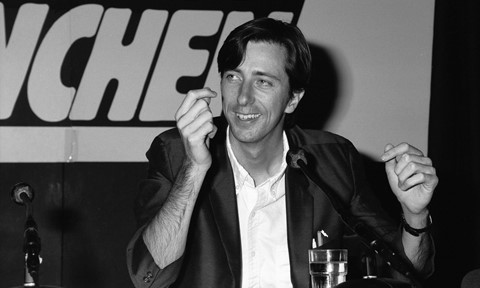
Hal Hartley
My particular concern is for German cinema and its subsidies. I have a commitment to my colleagues, to those who are well known like Werner Herzog and Wim Wenders, but also to those who have not yet made it.
gERman FILM
For all its international character, the festival continued to keep a close eye on local filmmaking; after all, it was Munich filmmakers who had come up with the idea of having their own film festival in the late 1970s. The “New German-Language Films” section curated by Ulrich Maass became a central pillar of the festival, with a growing number of films and fixed venues.
“In 1983, we started at the first FILMFEST MÜNCHEN with nine films which were shown in one single slot (at 5:30 pm in the Arri). In the meantime, the German-language program has its own cinema, the Rio-Palast.”
Ulrich Maas in the 1992 catalogue
This section tended to focus on new works by up-and-coming directors, such as Roland Suso Richter (KOLP, 1984), Ralf Hüttner (DAS MÄDCHEN MIT DEN FEUERZEUGEN, 1987), Anne Spoerri (ERZÄHLUNG FÜR SANDRA, 1988), Dominik Graf (including TIGER, LÖWE, PANTHER, 1999), and Helma Sanders-Brahms (APFELBÄUME, 1992). One of the regulars in this section was Philip Gröning (SOMMER, 1986; STACHOVIAK, 1988; DIE TERRORISTEN, 1992). Many years later, at Filmfest 2018, a homage gave viewers a chance to admire his early works as well as his latest film, MEIN BRUDER HEISST ROBERT UND IST EIN IDIOT.
In 1989, the Hypo-Bank Directors’ Prize for German Film was awarded at the Filmfest for the first time. The jury that year was comprised of producer Molly von Fürstenberg, director Joseph Vilsmaier, and Hans-Dieter Seidel from the Frankfurter Allgemeine Zeitung. The award went to Uwe Janson’s film VERFOLGTE WEGE. Many other directors who later became widely known received this advancement award at the Filmfest for their first film. In 1991, there were two recipients, Michael Klier (OSTKREUZ) and Sönke Wortmann (ALLEIN UNTER FRAUEN); in 1992 Wolfgang Becker received the award for KINDERSPIELE.
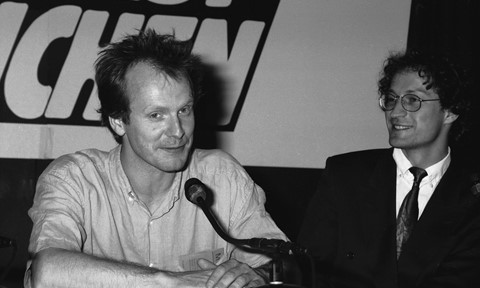
Philip Gröning
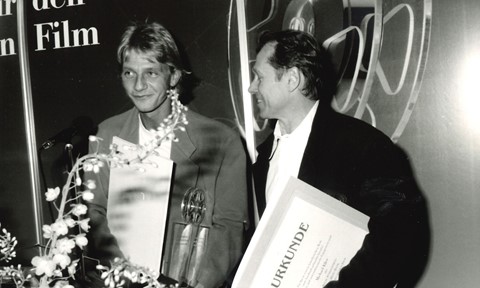
Sönke Wortmann
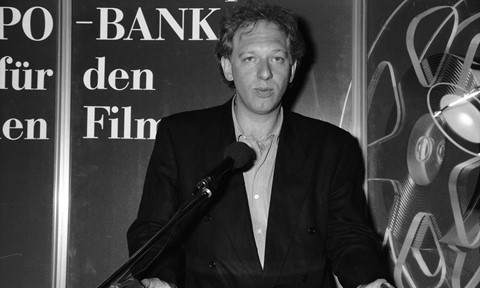
Wolfgang Becker
Outside of these sections, Eberhard Hauff and his team also pulled off some great and surprising things. These included the world premiere of the entire first part of the HEIMAT trilogy at Filmfest 1984. More than 15½ hours of Edgar Reitz’s epic generational portrayal of life in the Hunsrück region of Germany were screened over two days. Hauff himself moderated discussions on the present and future of German film, including a midnight discussion at the Künstlerhaus in 1985 titled “Der alte und der junge Neue Deutsche Film”.
Honors were routinely given to key figures in the German film scene. After the homage to Camilla Horn at the festival’s first edition, Munich cinema operator Fritz Falter, founder of the popular “studios für filmkunst” in Schwabing, followed in 1984, then comedy director Kurt Hoffmann in 1985 and producer Heinz Angermeyer, who had produced many of Hoffmann’s films, in 1986. Charlotte Flemming, a costume designer in Germany and abroad, was honored in 1989, and in 1991 homage was paid to the Theatiner cinema operated by Marlies Kirchner. And honors were given to a special-effects expert, Karl Baumgartner, in 1992. His nickname: Charly Boom-Boom.
Each year also saw a musical tour of German film history. In 1987, a gala concert titled “Wir machen Musik” (“We’re Making Music”) was held at the Gasteig’s Philharmonic Hall, with the Munich Radio Orchestra performing „Deutsche Filmmusik aus 60 Jahren“ (“Music from 60 Years of German Film Soundtracks”). The event was moderated by Paul Kuhn. In addition, classics of silent film were screened with live musical accompaniment. In 1991, saxophonist Klaus Kreuzeder performed improvisational music to a screening of Buster Keaton’s THE GENERAL (1926) in the Carl-Orff-Saal, and the following year at the same venue to Keaton’s THE NAVIGATOR (1924).
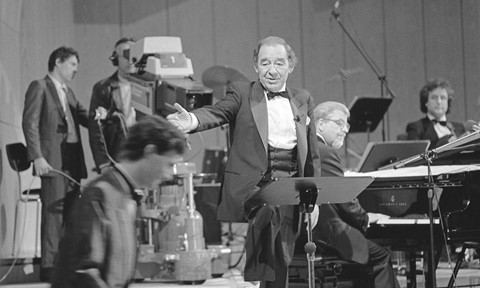
Paul Kuhn hosts "Wir machen Musik".
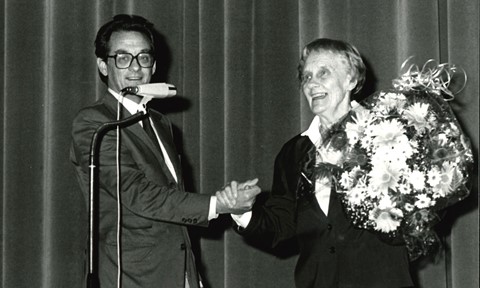
Eberhard Hauff with author Astrid Lindgren
the KINDERFILMFEST
From the very first edition of the festival, a Kinderfilmfest was organized in cooperation with the Förderverein Deutscher Kinderfilm. 18 films for a younger audience, including eight Munich premieres, were screened, mainly at ARRI and the Kinderkino Olympiadorf. Twelve less recent films were screened in the retrospective “New German Children’s Films 1970–1981”. Tickets were 2.50 marks for children, 3.50 marks for adults. “[We] hope that as many adults as possible will attend, because German children’s film are in a precarious state,” Eberhard Hauff noted in advance of the festival. Indeed, though, the first Kinderfilmfest was a success. “German children’s films are back,” summed up the Abendzeitung, noting, “and they are of high quality.”
For the Kinderfilmfest, too, international artists were invited to homages and retrospectives. In 1985, Swedish author Astrid Lindgren thrilled children and adults alike with her visit to Munich. Film adaptations of Lindgren’s books, including PIPPI LONGSTOCKING, THE CHILDREN OF NOISY VILLAGE, and RONIA: THE ROBBER’S DAUGHTER were shown in an extensive retrospective. A year later, Czech (screenplay) author Ota Hofman, best known as the co-creator of the movie character Pan Tau, came to Munich. Broader retrospectives were devoted to “Iranian Children’s Films” (1991) and “Children’s Film Culture from Africa” (1992).
[Festivals] provide a continual opportunity to make cinemas and films more widely popular. In view of the new media, the survival of the motion picture is at stake.
THE NEW MEDIA: DESTROYING THE IMAGINATION!
While streaming services are now seen as the main form of competition, cinema in the 1980s was, according to Hauff, threatened by the “rapidly expanding market in home video”. A panel discussion on “The Destruction of the Imagination by the ‘New Media’” was held at the Künstlerhaus in 1984, with filmmakers, educators, and academics among the participants.
In 1987, the first “Computer Seminar for Screenwriters” was held in cooperation with the Commodore computer company in the Black Box at the Gasteig. Starting in 1997, a section called “Video Premieres” screened international films that were not given a German theatrical release but were to go straight to video. That way, the film festival was able to give the “new media” a run for their money. Where else could these direct-to-video works demonstrate their full potential if not on the big screen?
